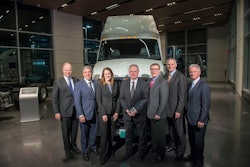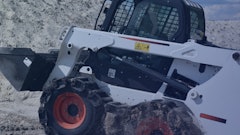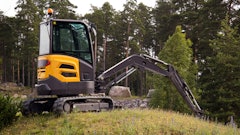As a growing number of school bus fleets consider adoption of advanced commercial vehicle safety technologies, those proven systems are helping to pave the way for even safer buses and improved automated vehicle functions that will benefit student transportation in the future. At Navistar’s IC Bus Next Stop: Innovation Summit in Chicago, Bendix Commercial Vehicle Systems shared its perspective on the evolution of commercial vehicle automation and its role in school bus applications. Bendix regularly offers leading-edge technical knowledge and insight with the goal of improving understanding across the landscape of the commercial and vehicle transportation industries.
“There are many reasons why school buses are sensible places for more advanced driver assistance technologies like collision mitigation – and we’re seeing the building blocks come into place through the availability and implementation of long-established safety components such as air disc brakes and full-stability systems,” says Fred Andersky, Bendix Director of Customer Solutions – Controls, who spoke at the Innovation Summit. “Over the next decade, the commercial vehicle and bus industry will continue to sharpen and integrate these systems into further advancements. This includes adding lateral control (steering) to longitudinal control (braking/acceleration) to provide systems that include lane-keeping capabilities as well as self-parking and braking modes – and, further out, semi-automated features such as interstate autopilot or select self-maneuvering applications.”
Part of Navistar’s Next Stop innovation initiative, the IC Bus Innovation Summit was created to bring imaginative, challenging, and big ideas forward, with the goal of showcasing where the industry can go and what the bus of the future could be. The Next Stop initiative will facilitate dialogue with all the stakeholders in pupil transportation – parents, students, customers, and transportation partners alike – through events, social media, and other new marketing vehicles to collectively chart the path of the industry over the next decade.
Future generations of school bus safety systems will be built upon today’s foundational technologies such as the Bendix ESP Electronic Stability Program full-stability system, which uses sensors and anti-lock braking to help mitigate or possibly prevent loss-of-control and rollover conditions.
“As automated technologies evolve, the role of the school bus driver – which already requires a set of unique personal skills and student safety knowledge beyond a CDL – will certainly change as well,” Andersky says. “These technologies can help shape that development, ensuring that drivers have the proper level of engagement and driving control, while providing the support needed to achieve maximum safety. In the far future, this means school bus drivers are better able to shift focus on aspects of student safety and vehicle operation that only they can handle: proper loading, unloading, and securement, for instance, and monitoring student interaction and activity. All of these things help contribute to a safer trip on the school bus.”
Bendix, the North American leader in the development and manufacture of leading-edge active safety and braking system technologies for commercial vehicles, recognizes and stresses the importance of ongoing industry outreach and conversation, as well as fleet and driver support, in maximizing school transportation safety.
Andersky notes that Bendix safety technologies complement safe driving practices and are not intended to enable or encourage aggressive driving. No commercial vehicle safety technology replaces a skilled, alert driver exercising safe driving techniques and proactive, comprehensive driver training. Responsibility for the safe operation of the vehicle remains with the driver at all times.




















